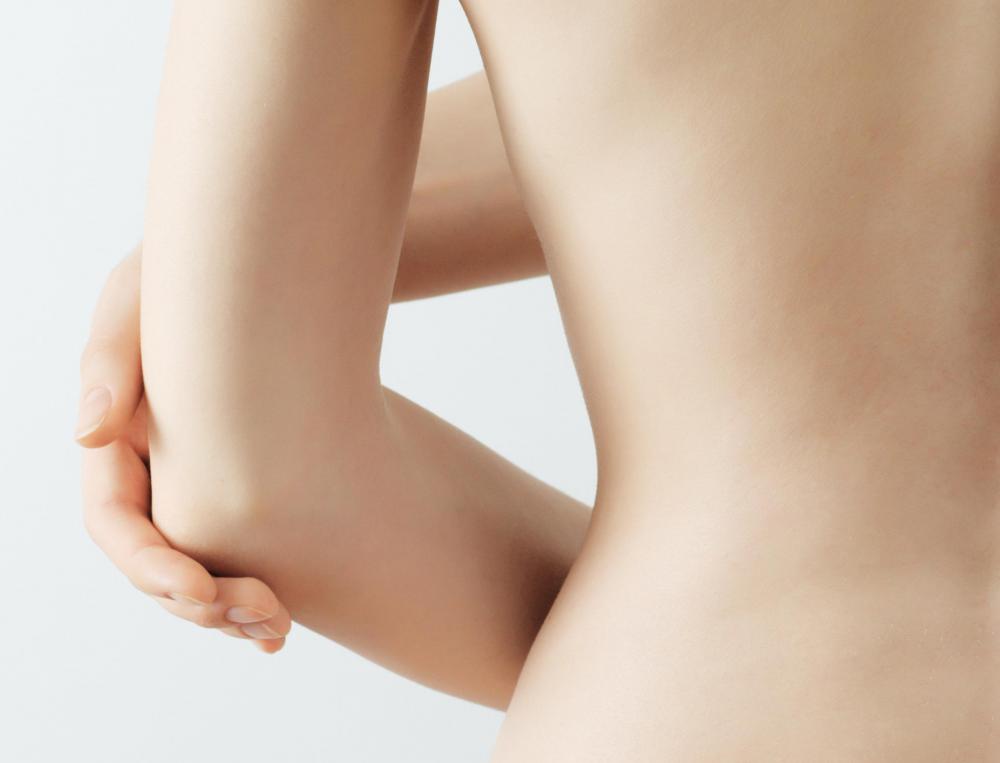At TheHealthBoard, we're committed to delivering accurate, trustworthy information. Our expert-authored content is rigorously fact-checked and sourced from credible authorities. Discover how we uphold the highest standards in providing you with reliable knowledge.
What Is the Best Way to Relieve Bone Spur Pain?
A bone spur is an abnormal bony protrusion that forms along the edge of bones and is caused by inflammation. When a bone spur rubs against adjacent nerves and other bones, it often results in pain and may also limit range of motion. Bone spurs, also known as osteophytes, may occur in several places, commonly in the spine, elbow, and heel. Treatment varies, depending on how severe the pain is and where bone spurs occur. Ways to relieve bone spur pain often include medicine, rest, physical therapy, and in severe cases, surgery.
One of the most common ways to relieve pain includes taking over-the counter non-steroidal, anti-inflammatory drugs, including ibuprofen. Anti-inflammatory drugs often may be needed for more than a month and will help to reduce pain and swelling. Other prescribed medication may include muscle relaxants. Steroid injections are also used to relieve bone spur pain. Injections of cortisone may bring about temporary relief.

A simple way to get relief from bone spur pain is simply to rest. Activity, particularly running, often arouses swelling and pain in the joints. While resting, a person suffering from bone spur pain can use ice and heat to treat discomfort several times a day. An individual may put an ice pack on the aggravated area for approximately 10 to 15 minutes, followed by a heating pad for an additional 10 to 15 minutes.

Physical therapy, including gentle stretching and strengthening, is also a method for relief concerning bone spur pain. Within two weeks, physical therapy along with exercise can ease sore joints. Particularly with bone spurs in the back and neck, exercise lowers the amount of pressure placed on the nerves. Water activities like swimming and low-impact aerobics do not place as much stress on the body and can help to improve flexibility and strength, as well as increase range of motion.

In certain cases when all other methods fail to alleviate pain and range of motion, surgery may be needed. During surgery, bone spurs and ailing ligaments may be removed. The removal of bone spurs may be done during an open procedure or arthroscopically. During an open procedure, a surgeon makes an incision near the affected joint to gain access to the bone spur. With arthroscopic surgery, a surgeon does not fully cut into the affected joint, but makes small incisions for inserting specialized miniature tools with the use of a tiny camera.
AS FEATURED ON:
AS FEATURED ON:


















Discussion Comments
@SteamLouis: You say surgery is better. I don't agree. I know someone who had a bone spur surgery and it made her foot worse, but I have known people who took anti-inflammatory drugs and it never came back.
I have a mild heel bone spur and my pain has mostly disappeared since I switched to orthopedic shoes. I also wear special insoles for extra support and comfort.
@SteamLouis-- Surgery is not necessarily a good way out. There are other ways to relieve the pain like the article described. There are treatments like pain relievers or steroids to relieve the inflammation.
The bone spur itself actually doesn't cause the pain. It's the pressure that the bone applies on the surrounding nerves and tissues that causes the pain. It also causes inflammation and swelling which reduces movement and causes stiffness.
So the pain can be relieved with the use of anti-inflammatory treatments. Some people also get good results with physical therapy.
I don't see how anti-inflammatory and pain relieving drugs will help with a bone spur. Yes, they may mask the symptom for a while, but unless the underlying condition is dealt with, the symptoms will always return.
Most people don't want to have surgery done for a bone spur unless they have no other choice. I certainly don't blame people for that. But it's probably the most effective and direct treatment. Because the bone overgrowth causing all of the symptoms is removed. As long as the overgrowth remains, it's bound to cause problems sooner or later.
Post your comments